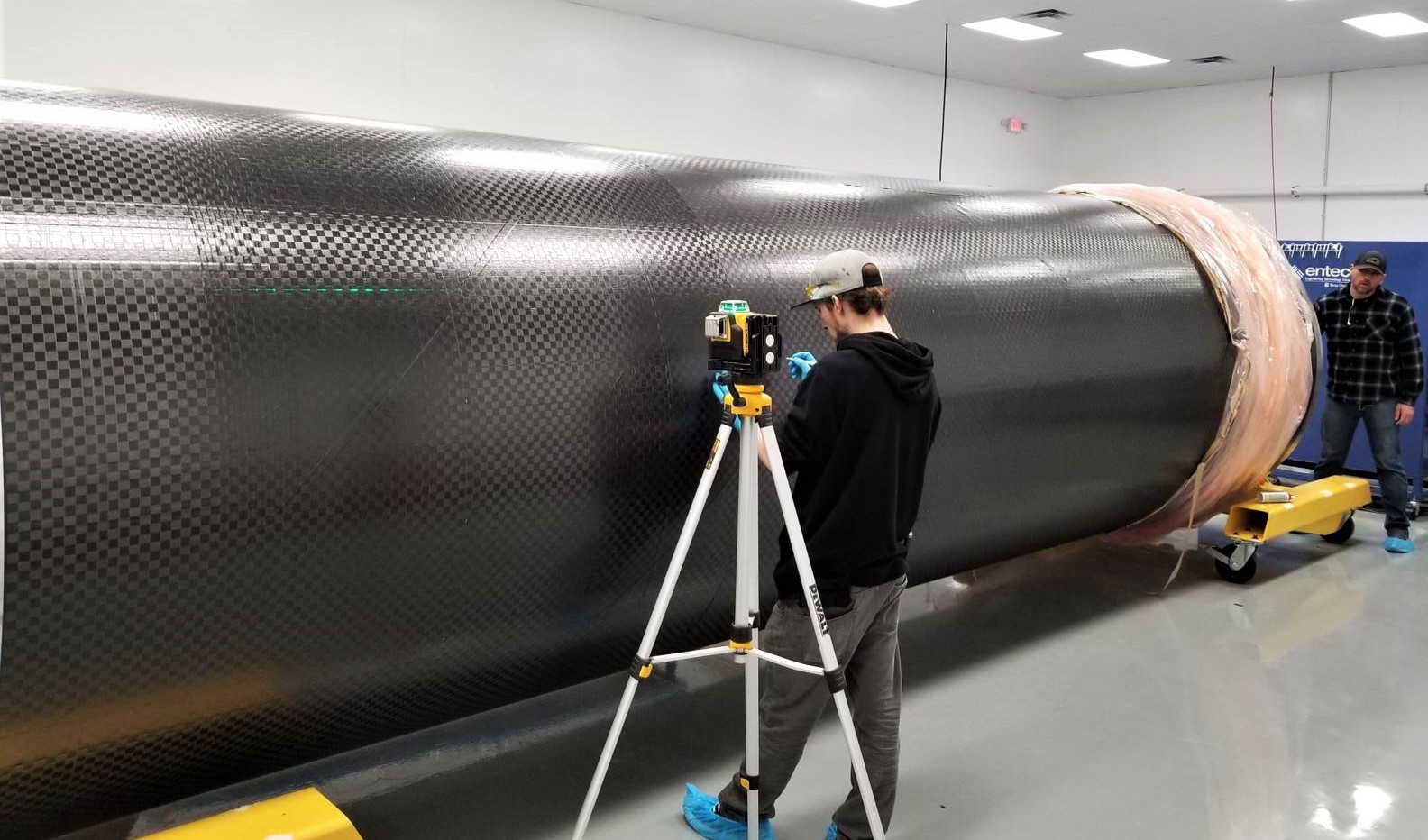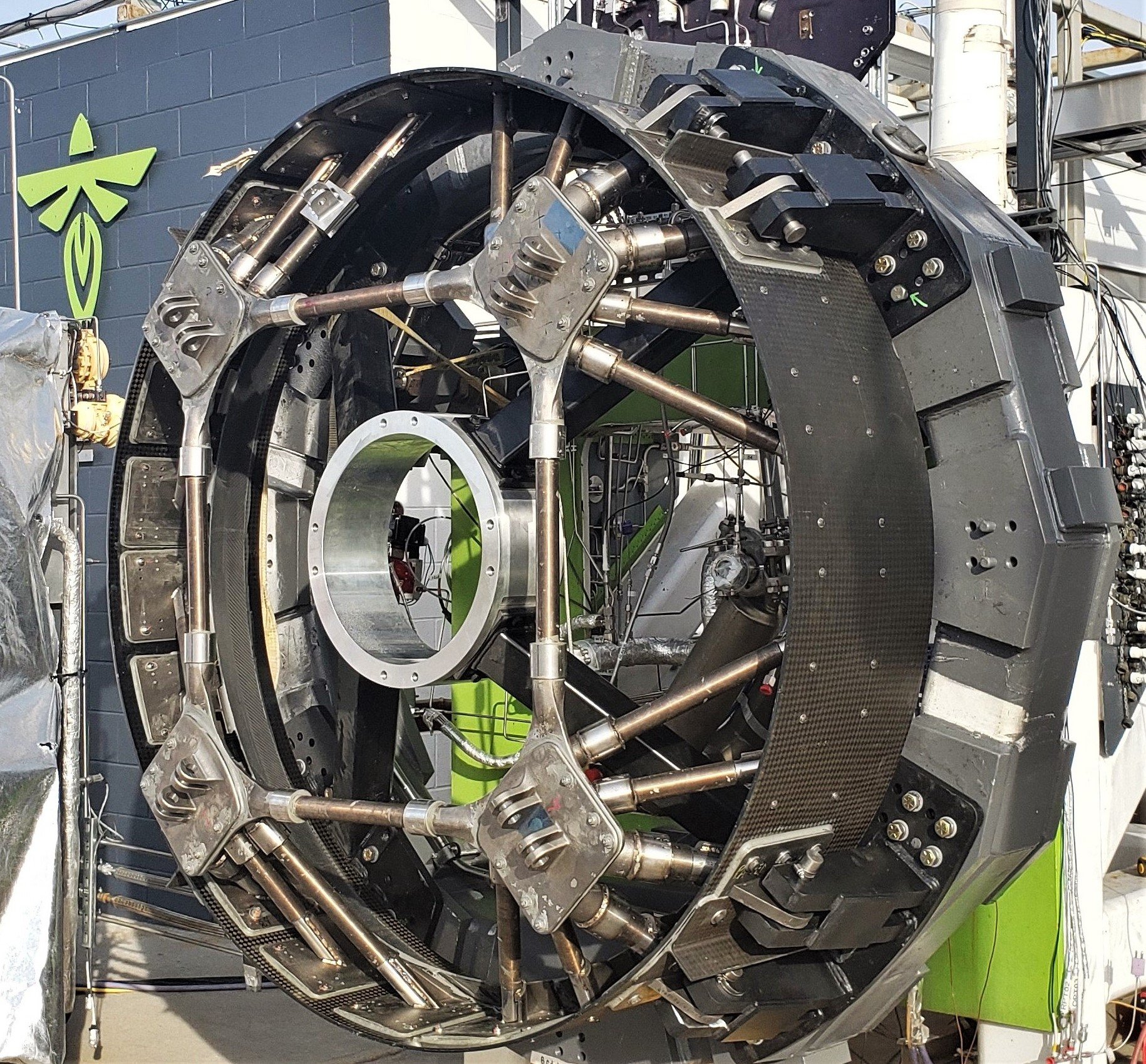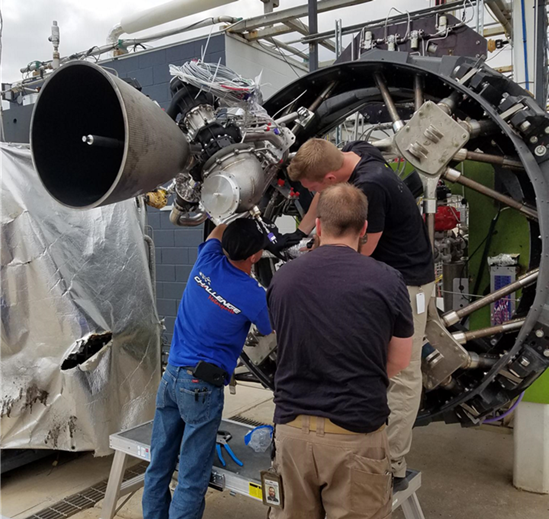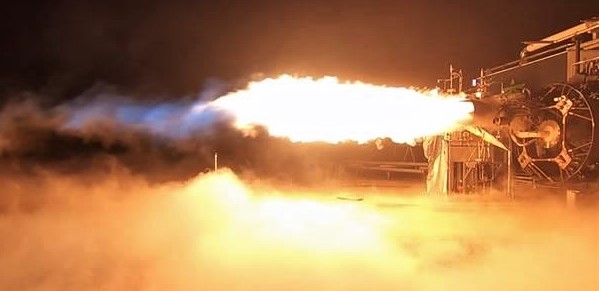News
DeepSpace: Firefly set for smallsat industry’s second place trophy, Rocket Lab leads the pack

This is a free preview of DeepSpace, Teslarati’s new member-only weekly newsletter. Each week, I’ll be taking a deep-dive into the most exciting developments in commercial space, from satellites and rockets to everything in between. Sign up for Teslarati’s newsletters here to receive a preview of our membership program.
In the race to a field dedicated smallsat launch vehicles, New Zealand startup Rocket Lab has already won first place, a fact that has been discussed several times in past Deep Space issues. After completing its first launch of 2019 on March 28th, Rocket Lab’s Electron rocket is ready for another mission as early as May 4th, a good sign for the company’s planned monthly launch cadence.
Despite Rocket Lab’s major success, there is plenty of room for additional competitors and/or complementary vehicles. Electron’s maximum payload hovers around ~225 kg (500 lb) to low Earth orbit (LEO), limiting its usefulness for any payloads that are larger than truly tiny satellites or in need of higher orbits. Also discussed on DeepSpace, there are 10+ serious startups with funding and hardware in work attempting to build said smallsat launch vehicles, ranging from the extremely tiny (Vector: 60 kg to LEO) to much larger rockets from companies like Relativity, ABL Space, and more. Firefly Space, however, is the startup that has arguably broken away from the pack in the last few months, firmly setting itself up to be second in line behind Rocket Lab.
Build, test, qualify
- Firefly’s major leaps forward came in December 2018 and then April 2019, both related to testing the completed upper stage of the company’s Alpha rocket.
- In December, the upper stage ignited for the first time. In April, the same upper stage successfully performed a mission-duration static fire that lasted a full 300 seconds (five minutes), the same length required for a rocket to reach orbit after separating from Alpha’s first stage.
- For any launch vehicle development program, the first successful mission-duration test fire of an integrated rocket stage is arguably one of the most important milestones, second only to the same hardware’s inaugural launch.

- Simultaneously, Firefly began integrated testing of the thrust section and Reaver engines that will be the basis of Alpha’s first stage. The rocket’s Lightning second stage engine has been tested extensively at this point in development, although the stage’s lone engine produces a maximum of ~70 kN (~16,000 lbf) of thrust.
- The booster’s four Reaver engines will each produce ~170 kN (55,000 lbf) of thrust, around three times as much as Lightning. Alpha’s second stage is critical, but its first stage is arguably far more complex.
- Despite the relative power differential, it’s still worth noting that Alpha’s entire first stage (736 kN/166,000 lbf) will be significantly less powerful than a single one of Falcon 9’s nine Merlin 1D engines (941 kN/212,000 lbf).
- Although Alpha is far smaller than rockets like Falcon 9 or Atlas V, it will nominally be capable of launching 1000 kg to an altitude of 200 km (LEO) or ~650 kg to a 500-km sun-synchronous orbit (SSO). This translates to around 4.2X the performance of Rocket Lab’s Electron at 2.5X the cost per launch ($15M vs $6M).
- Assuming no payload capacity is wasted, Alpha could thus be almost 50% cheaper than Electron when judged by cost per kilogram to orbit.
- Of course, this comparison ignores the fact that Firefly will have to far more heavily rely on booking co-passenger satellites to keep Alpha launch prices competitive with Electron.
- If exactly 1000kg or 630kg of cargo can’t be booked each launch, the expendable Alpha’s $15M launch cost will be distributed over less payload, raising costs for each customer. In other words, the competitive advantages of Alpha are almost entirely associated with its ability to launch payloads outside of Electron’s capabilities, as are its potential weaknesses.


Firefly Alpha’s upper stage qualification article (top) and a comparison of a variety of launch vehicles. (Teslarati)
The sweet spot
- In theory, Firefly Alpha’s could find itself in a relatively sweet spot, where the rocket’s launch costs are not so high that dedicated rideshare missions become intractable (i.e. Spaceflight’s SSO-A launch on Falcon 9) but its payload performance is still good enough to provide access to a huge swath of the space launch market.
- Firefly also has plans to develop a heavier launch vehicle based on Alpha, known as Beta. Conceptually equivalent to SpaceX’s Falcon Heavy, Beta would use three Alpha boosters and a significantly upgraded second stage and would be able to launch 4000 kg to LEO or 3000 kg to SSO.
- Regardless of Firefly’s grander aspirations, Alpha is poised to capitalize on the simple fact that it will be the second commercially viable smallsat launch vehicle to begin operations. Alpha’s first orbital launch attempt could occur as early as December 2019, although slips into early 2020 are to be expected.
- At that point, Rocket Lab’s Electron will be the only serious competition on the market. Relativity’s Terran and ABL Space’s RS-1 rockets plan to offer a competitive ~1250 kg to LEO or ~900 kg to SSO, but their launch debuts are tentatively scheduled no earlier than late 2020.
- If Alpha’s development continues smoothly, Firefly could easily have a solid 12-month head start over its similarly-sized competitors,
- Up next for Alpha is a similar campaign of tests focused on the first integrated booster, including tests fires and an eventual mission-duration qualification test.
Mission Updates
- SpaceX’s CRS-17 Cargo Dragon resupply mission has slipped an additional four days from April 30th to May 3rd (3:11 am EDT, 07:11 UTC) after the International Space Station (ISS) began suffering serious (but non-threatening) electrical issues. Additional launch delays could follow if the issue is not resolved in the next few days.
- The first operational Starlink launch remains firmly on track for NET mid-May. According to SpaceX, all Flight 1 satellites are already in Florida, while the FCC approved the company’s modified constellation license – permitting Starlink operations after launch – on April 26th.
- Due to CRS-17’s launch delays, the availability of SpaceX’s LC-40 pad will now likely be the main limiting factor for the Starlink-1 launch date.
- SpaceX’s second West Coast launch of 2019 – carrying Canada’s Radarsat Constellation – is now expected to occur no earlier than mid-June and will reuse Falcon 9 B1051.
- SpaceX’s launch of Spacecom’s Amos-17 spacecraft is now scheduled no earlier than July. Falcon Heavy Flight 3 is tentatively scheduled for launch as early as June 22 – all three boosters should be on site in Florida within the next week or two.
Photo of the Week:

(SpaceX)
The third Falcon Heavy center core – believed to be B1057 – was spotted eastbound in Arizona on April 16th. On April 26th, SpaceX confirmed that the booster completed its acceptance static fire test at the company’s McGregor, TX facilities, a sure sign that all of Falcon Heavy Flight 3’s major components should be in Florida within the next few weeks.
We’ll see you next week.
Not a member? Become a member today to receive DeepSpace each week!

News
Tesla FSD successfully completes full coast-to-coast drive with zero interventions
Tesla community members celebrated the milestone on X, and the feat earned praise from some of the electric vehicle maker’s executives.

A Tesla owner has successfully completed a full coast-to-coast drive across the United States on Full Self-Driving (FSD) Supervised. The trip was accomplished with zero interventions.
Tesla community members celebrated the milestone on X, and the feat earned praise from some of the electric vehicle maker’s executives.
FSD Coast-to-Coast
The coast-to-coast feat was accomplished by Tesla owner Davis Moss, who drives a stealth gray Model 3 with AI4 hardware. Based on data from the FSD database and a community tracker, the last 10,638.8 miles Moss drove in his Model 3 were completed using FSD 100% of the time. His vehicle is equipped with FSD v14.2.1.25, which was installed 12 days ago.
As per Moss in a celebratory post on X, his Model 3 was able to complete a full coast-to-coast drive across the United States in 2 days and 20 hours. His trip started at the Tesla Diner in Los Angeles, CA, and it ended in Myrtle Beach, SC. Overall, his trip spanned 2,732.4 miles.
“This was accomplished with Tesla FSD V14.2 with absolutely 0 disengagements of any kind even for all parking including at Tesla Superchargers,” Moss stated in his post. He also added in later comments that there were zero close calls during the trip.
Tesla community celebrates
The FSD milestone trip was widely lauded by members of the Tesla community, especially since a coast-to-coast drive with zero interventions has been cited by Elon Musk as a target since October 2016, when Autopilot 2.0 was unveiled. At the time, Musk initially estimated that a coast-to-coast drive across the United States should be possible by the end of 2017. Considering Moss’ feat in his Model 3, it appears that Elon Musk’s estimate was not impossible at all. It was just late.
Musk himself celebrated the milestone on X, and so did Tesla VP of AI Software Ashok Elluswamy, who wrote “World’s first fully autonomous coast-to-coast drive, done with Tesla self-driving v14. Congrats and thank you @DavidMoss!” in a post on X. The official Tesla North America account also celebrated the feat, writing “First Tesla to drive itself from coast to coast w/ FSD Supervised. 0 interventions, all FSD” on X.
Elon Musk
Elon Musk: Tesla Model Y is world’s best-selling car for 3rd year in a row
The Model Y has now established an impressive streak that would otherwise have been impossible before Tesla.

Elon Musk has announced that the Tesla Model Y has become the world’s best-selling car by volume for the third consecutive year, capping 2025 with another dominant performance.
The Model Y has now established an impressive streak that would otherwise have been impossible before Tesla.
Three years in a row
Musk posted on X: “Tesla Model Y is now officially the world’s best-selling car for the third year in a row!” The CEO’s comment echoed an update that Tesla included in its 2025 recap, which highlighted, among other things, the Model Y’s incredible streak.
The Model Y has held the title since 2023, outperforming traditional leaders like the Toyota RAV4 and Corolla thanks to its bang-for-the-buck nature and its stellar combination of practicality, performance, and tech. The Model Y is also lauded as one of the safest vehicles on the road, making it an ideal choice for families in key markets such as China.
An impressive 2025
The Model Y’s sales feat in 2025 is especially impressive considering the introduction of the vehicle’s new variant. Tesla’s changeover to the new Model Y across its global factories resulted in sales being paused for some time in the first quarter. As per Tesla’s Q1 2025 vehicle delivery and production report, “the changeover of Model Y lines across all four of our factories led to the loss of several weeks of production in Q1.”
This suggests that the Model Y’s sales remained strong in 2025 to the point where it could still claim the title of the world’s best-selling vehicle by volume, even with its sales being throttled during the first quarter of the year. It would then be interesting to see just how far the Model Y can go in 2026, especially considering the rollout of new variants like the six-seat extended wheelbase Model Y L, the affordable Model Y Standard, and the top-tier Model Y Performance.
News
Tesla shares epic 2025 recap video, confirms start of Cybercab production
The cinematic montage, posted by the official Tesla account on X, celebrated the company’s progress in EVs, energy, and Robotaxi development.

Tesla has released an epic year-in-review video for 2025, recapping some of its major achievements from refreshed models to autonomy breakthroughs and production ramps.
The cinematic montage, posted by the official Tesla account on X, celebrated the company’s progress in EVs, energy, and Robotaxi development while looking ahead to an even bigger 2026.
Tesla’s 2025 highlights recap
Tesla has had a busy 2025, as highlighted in the recap video. The video opened with Elon Musk explaining the company’s pursuit of sustainable abundance. A number of milestones were then highlighted, such as the rollout of FSD v14, Optimus’ numerous demos, the opening of the Tesla Diner in Hollywood, LA, the completion of the world’s first autonomous car delivery, and the launch of the Robotaxi network in Austin and the San Francisco Bay Area.
Tesla also highlighted several of its accomplishments over the year. As per the company, the Model Y was the year’s best-selling vehicle globally again, and Teslas became more affordable than ever thanks to the Model 3 and Model Y Standard. Other key models were also rolled out, such as the refreshed Model S and X, as well as the new Model Y, the new Model Y Performance, and the six-seat, extended wheelbase Model Y L.
The Megablock was also unveiled during the year, and the Supercharger Network grew by 18%. Over 1 million Powerwalls were also installed during the year, and the Cybertruck became the first EV truck to get both an IIHS Top Safety Pick+ award and an NHTSA 5-Star safety rating.
Cybercab production confirmed
Interestingly enough, Tesla also confirmed in its 2025 recap video that the production of the Cybercab has started. This bodes well for the vehicle, as it could result in the vehicle really being mass-produced in the first half of 2026. Elon Musk confirmed during the 2025 Annual Shareholder Meeting that Cybercab production should earnestly start around April 2026.
Musk has also noted that the Cybercab will be Tesla’s highest-volume vehicle yet, with the company aiming for an annual production rate of about 2 million units. “If you’ve seen the design of the Cybercab line, it doesn’t look like a normal car manufacturing line,” Musk said earlier this year. “It looks like a really high-speed consumer electronics line. In fact, the line will move so fast that actually people can’t even get close to it.”











